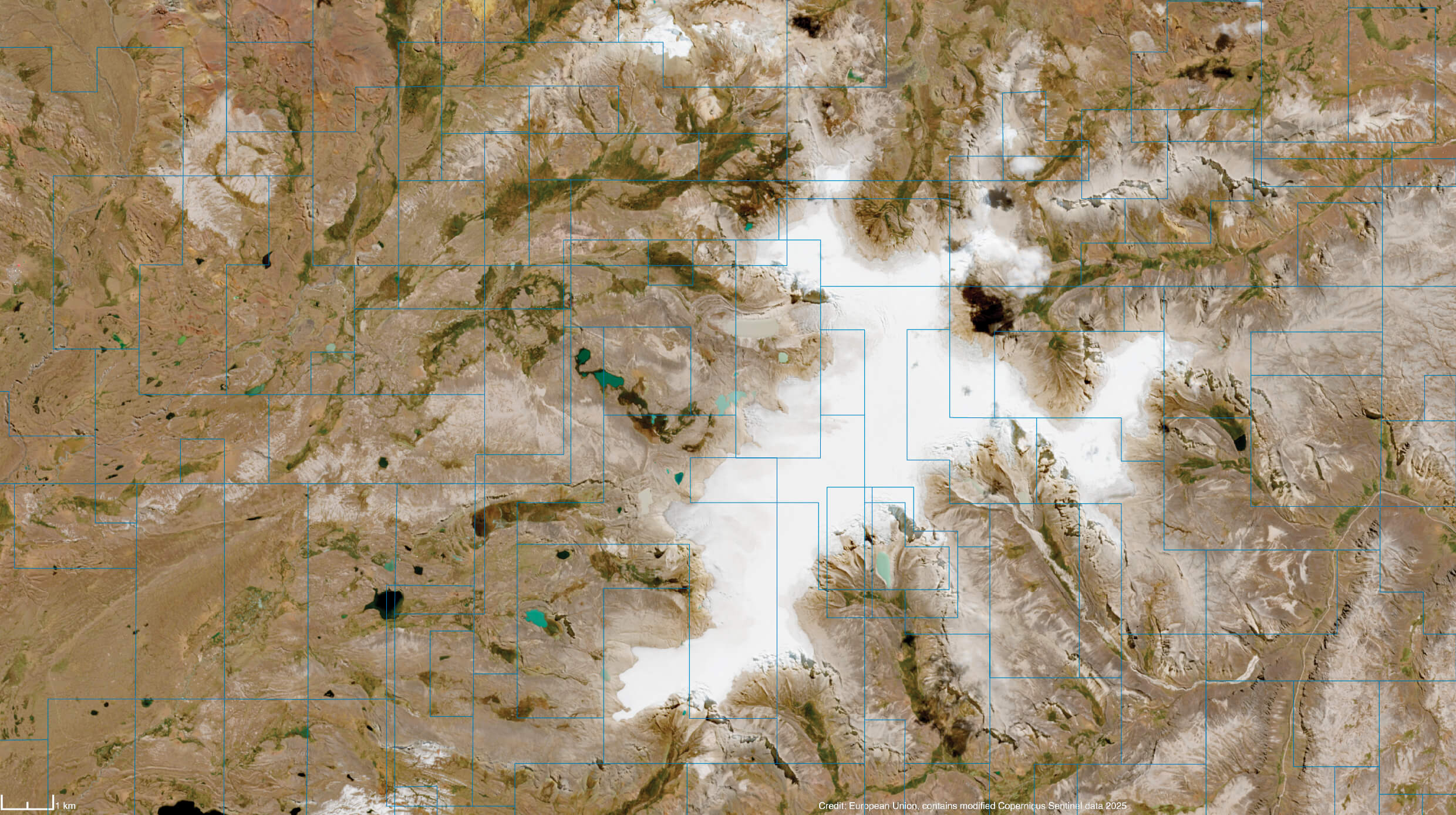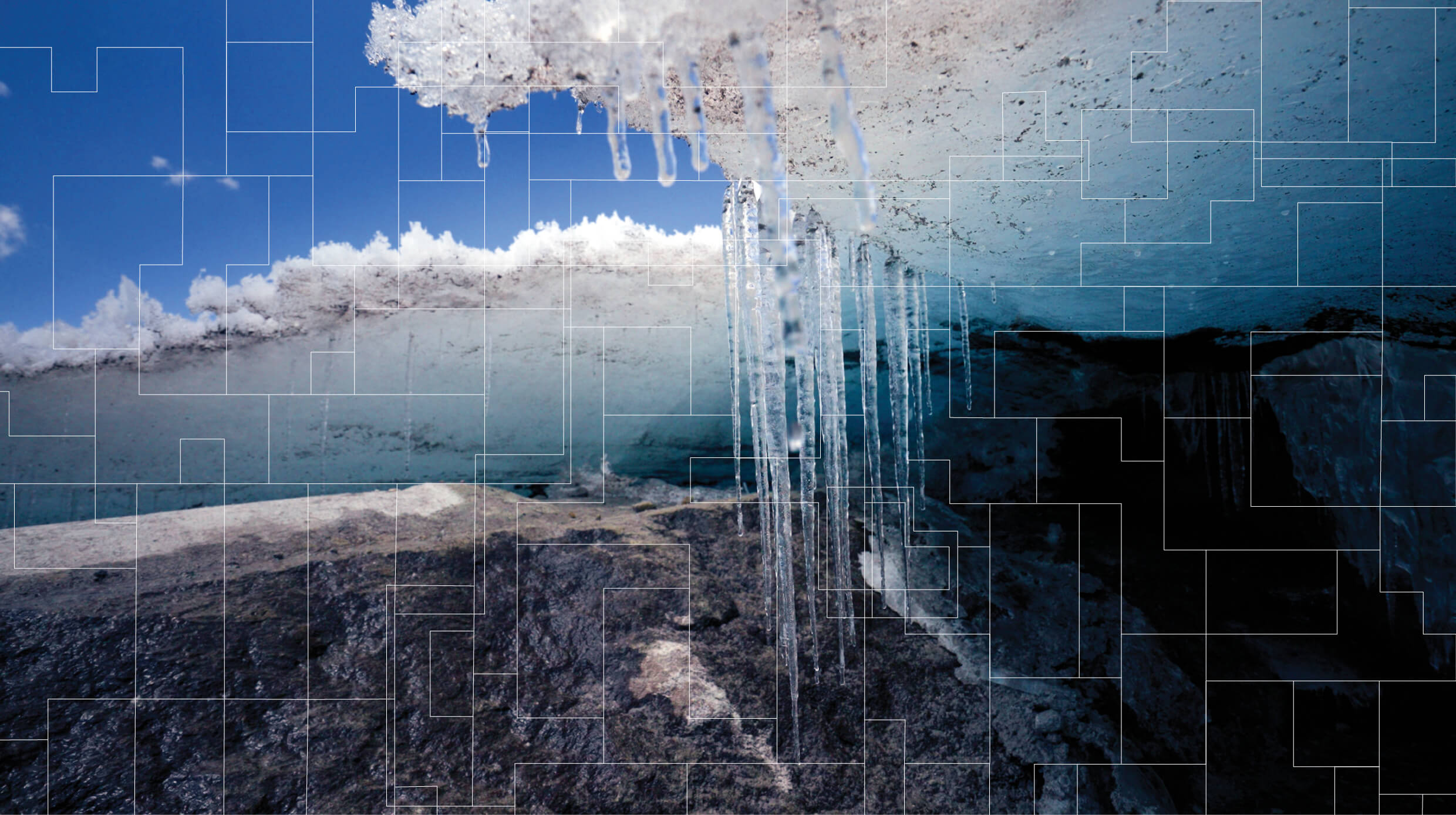
At 5,600 meters above sea level in the Southern Andes of Peru, Quelccaya [1] emerges as an ice body expanding and contracting with each breath. A complex living metabolism. Her body moves under its own weight — slow-paced, invisible to human eyes, crawling. Revealing hidden ancestral memories under her melting skin.
For the Quechua-speaking communities who live at her feet, Quelccaya is not merely a geological ice formation; she is a grandparent, an elder, a companion, a tirakuna (earth-being) — a living and dying being embedded within a larger cosmology where territory is alive and co-created through relationships. Studies[2] suggest she may disappear in 30 years, if not sooner, leaving millions of people and ecosystems in a water crisis.
“Without the glacier, without water, we cannot live. It will affect, above all, our children and grandchildren. It is they who will be affected the most by climate change.” – Yolanda Quispe, Quechua alpaca herder, park ranger, and rondera (land defender), who lives next to Quelccaya, in the community of Phinaya, Cusco.
In the Andes, territory is cosmological. The Western separation between nature and culture does not take root here. Land, water, stars, sun, moon, and skies belong to the territory. So too are dance, knowledges, languages, and ways of life. Herding, weaving, and caring for the land are part of this cosmological web of relations. Every daily activity is undertaken as an acknowledgement of our interdependence, as humans, with the living world.
“The waters from the Quelccaya glacier flow downward, irrigating the wetlands and grasslands, which are essential for our camelid livestock. These pastures provide food for our alpacas, making this water vital to our way of life. Further downstream, the glacier’s waters also emerge through natural springs, nourishing the crops in the lower valleys.” – Yolanda Quispe.
Quelccaya is being targeted. In January 2024, the Peruvian government approved the Quelccaya Lithium Project, granting the Canadian American Lithium Corporation the right to drill, blast, and extract from this ancient glacial body. An act of desecration in a long history of colonial violence. Rendering ancestral lands into sacrifice zones, territories made disposable for the prosperity and wealth accumulation of distant power-holders.
“Our territory is turning into a sacrifice zone, into Europe’s backyard,” says Vito Calderón, an Aymara communicator and activist for the rights of the Quechua and Aymara Indigenous peoples in the Puno region. “In Peru, when one speaks with local people and asks what climate change means to them, they will say it’s all about keeping us poor.”
Quelccaya reveals the contradictions at the heart of the energy transition. Mining for lithium and uranium — in service of a transition being driven by European and North American countries — threatens to accelerate the destruction of one of Earth’s vital water bodies. Colonialism re-emerges under a “green” mask deepening the climate crisis. What is currently unfolding before our eyes is not a transition, but an energy addition. Throwing renewables into the global energy mix while continuing to rely on fossil fuel and mineral extraction.
“While the narrative of the energy transition speaks of clean energy, they are planning to destroy our glaciers. The very ones we need to protect to fight the climate crisis. Instead of halting their melting, they are sacrificing them. That’s why, to me, this energy transition is nothing more than a discourse, only words. In practice, mining will only expand, exploiting more resources, contaminating water, harming people’s health, displacing communities, and criminalising those who resist.” – Vito Calderón.
Sacrifice
The word sacrifice originates from the Latin sacrificium — “to make sacred.” In colonial terms, sacrifice becomes severed from sanctity. It embodies a different meaning: the annihilation of land and life in service of the continuity of the Western project of endless progress, and capital accumulation. This piece situates itself within the tension of sacrifice and sacred, disposal and reverence, extraction and reciprocity. It is both a mourning and a proposal: to transmute sacrifice back into the sacred, to restore the web of relations, and to reclaim desecrated lands as sanctuaries of reverence and renewal.
The sacrifice or extractive zone, as conceptualised by Macarena Gómez-Barris, is not only a site of environmental devastation — it is a zone of total domination — stretching across deserts, forests, glaciers, and mountains in the so-called Global South, and into the “Souths within the North.” It cuts through the bodies and lifeways of the communities who live there: ecosystems mined, waters poisoned, air rendered unbreathable, and people — mostly Indigenous, Brown, Black, impoverished, sed, and neglected — dispossessed.
Quelccaya finds herself within the expanding extractive frontier, marked as a new sacrifice zone for the “green” transition. To date, American Lithium Corporation and its Peruvian subsidiary Macusani Yellowcake hold 167 concessions across the Cusco and Puno regions in Peru, some overlapping the glacier itself, while new mining title requests continue to emerge. These concessions span over 92,000 hectares, threatening to turn the territory into a zone of total devastation.

Sacred
There is another way of understanding and relating to Earth that coexists in the same timespace as the extractive frontier. This lifeway emerges from a felt sense of interdependence. A worldview that knows the world as made through relationships. Relationships with land, cosmos, ancestors, spirits, more-than-human beings, time, song, and breath.
In the Andean Cosmovision, the awareness and aliveness within each of us form a continuum with the wider aliveness of the living world. Here, dignity stands in direct opposition to extraction. If we regard every living being as a holder of intrinsic dignity with their own sacred place in the web of relations, one-sided extraction becomes impossible. Only mutual care.
Within this Cosmovision, Quelccaya is a living being animated by cardiovascular, lymphatic, and other metabolic systems. Liquids flow through her veins, carrying particles of deep time, encapsulating emotion in ice bubbles. This sacred being carries a knowledge system that refuses to be dismembered into divisions — between animate and inanimate, object and subject, matter and mind.
So how do we move forward?
By refusing the ontology of separation and resisting the extractive matrix.
By reclaiming Earth-rooted ways of knowing — ways of knowing that have never disappeared, only been denied, devalued, displaced.
By reorienting toward ancestral futures, futures that, as Ailton Krenak reminds us[3], have always been here.
We stand attuned to the dignified grief of losing a glacial being, and from that grief, we generate responsibility.
“As Quechua-speaking Indigenous people, we will always stand in defence of this land, and they will never defeat us, because we have always been here. The only way they could take this from us is through force.” – Yolanda Quispe.
Quelccaya is melting. But she is not gone. Her body, memory, and breath are still teaching us how to live and resist.
1. Quelccaya is the world’s largest tropical glacier. Her ice has been studied since 1974 by climate scientists, who use snow and ice cores as a climate thermometer to reconstruct past climates and monitor changes.
2.Yarleque, C., Vuille, M., Hardy, D.R. et al. Projections of the future disappearance of the Quelccaya Ice Cap in the 2 Central Andes. Sci Rep 8, 15564 (2018). https://doi.org/10.1038/s41598-018-33698-z
3. Ailton Krenak, Ancestral Future (2024). Translated from Portuguese by Alex Brostoff, Jamille Pinheiro Dias. Polity Press.